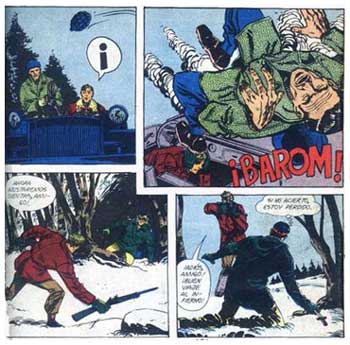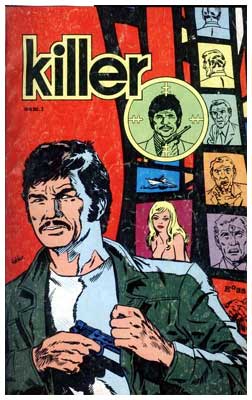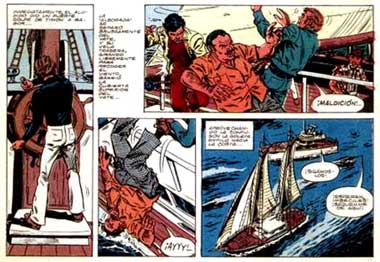'James Bond'.
German Gábler was born in 1942 in Santiago, Chile. He graduated from the Catholic University of Chile in 1966. He grew up with magazines like Salgari, El Cabrito, Pulgarcito, Billiken and Patoruzito, and inspired by these periodicals, he began drawing in his early childhood. He created his own comic magazines, which circulated in his family. He began working as a professional comic artist with the help of Jorcar, who introduced him to the publishing house Zigzag. Gábler was initially hired as a scriptwriter, and thus he cooperated with his brother Guillermo on several stories for the magazines Rocket and Robot. His scripts caught the attention of Jorge Ulzurrún, who was in charge of the magazines Sueños Maravillosos and Mundos Fabulosos. Soon afterwards, Gábler began contributing to these magazines, both as a scriptwriter and as an artist. He created among others the fantasy series 'El Mago'.
'Killer'.
Gábler eventually landed on a regular job drawing and writing 'James Bond' adaptations for the popular magazine 007, James Bond. He also contributed to Ruta 44 and Far West, cooperating on the series 'Ray Hunter' and 'El Fugitivo'. He helped launch the juvenile magazine Mapuchín at Zigzag, but when the company changed to Quimantú, Gábler left the firm to work in the industrial field for a while. Around this time, he also began illustrating comic adaptations of novels for an Argentinian publisher. During the mid-1970s, he came up with two magazines of his own. The first one was Killer, which was in fact a continuation of 007, but this time with the face of Charles Bronson. The magazine sold well, but folded due to the economic situation of the country. He then began the magazine Mash, strongly influenced by the American magazine, MAD.
'Los Cuatro de la Alborada'.
Gábler then created the adventure strip 'Los Cuatro de la Alborada', which appeared in Mampato. Also for this magazine, he made a comic, 'Kon Tiki', based on Thor Heyerdahl's famous Kon Tiki expedition. He became General Manager of SGM and began contributing stories to the British publisher Fleetway. His Fleetway assignments were the final comics works he did. In the 1980s, he focused on his work for television and radio.




